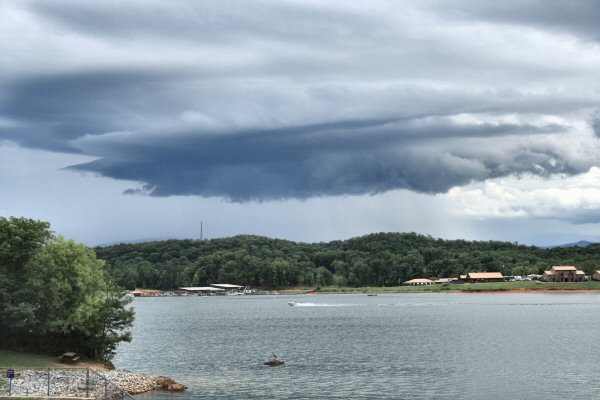Tennessee Severe Weather Awareness Week Begins Feb. 17, 2013
Campaign Highlights Preparedness Activities to Help Individuals, Families and Businesses Prevent Injuries and Deaths from Weather Threats
With 2013 already setting a record for Middle Tennessee’s second-highest month ever for tornado outbreaks, emergency managers, meteorologists and broadcasters are engaging in a coordinated campaign to promote Tennessee Severe Weather Awareness Week, Feb. 17, to Feb. 23, 2013.
“We sometimes wait until the storm is upon us to think preparedness,” said Jim Bassham, director of the Tennessee Emergency Management Agency (TEMA). “If we consider the lingering impact of Hurricane Sandy and our own experiences with tornadoes already in 2013, it should be pretty clear that waiting to be ready is not a plan that’s going to save your life or the lives of your family.”
Throughout the week, TEMA, the National Weather Service (NWS), Tennessee Association of Broadcasters (TAB) and other supporting groups will conduct educational activities and drills to help people prepare for tornadoes, damaging winds, flash floods, lightning and hail.
The NWS and its Skywarn Storm Spotters Network will focus each day of the week on safety steps and warnings for specific weather threats, such as lightning and flash flooding. For Tennessee’s number one threat, tornadoes, NWS with conduct this year’s statewide tornado drill around 9 a.m., CST, on Wed., Feb. 20.
“As we’ve already seen in 2013 severe weather can happen any time in Tennessee, but the greatest threat occurs from March through May”, said Tom Johnstone, Warning Coordination Meteorologist with the NWS in Nashville. “Severe Weather Awareness Week in February is a chance for Tennesseans to learn about, and prepare for, all of the hazards the upcoming severe weather season will bring.”
TEMA, NWS and TAB also plan to host a press conference on Wed., Feb. 20, 2013 at the NWS’ Old Hickory, Tenn. office to highlight and ceremonially sign the new state Emergency Alerting System (EAS) plan.
TEMA will also use the press event to conduct a statewide emergency communications radio exercise to illustrate how emergency responders use technology to communicate with each other during disasters and emergencies.
The state EAS plan provides guidelines as to how Tennessee’s broadcasters, cable and wireline television operators issue warnings to the public. This is the first major revision to the plan since 1998 and includes more alerting authorities and incorporates many new technologies that did not exist 15 years ago.
“This revised state plan is developed in a spirit of cooperation and coordination in order to give the citizens of Tennessee the best public notification system possible in times of critical need,” said Whit Adamson, TAB president. “Our intent is to review and revise this document on a regular, and as needed, basis through our private and public sector partnership.”
The Tennessee State Emergency Communications Committee conducted the EAS plan revision process with the input of its many members who include: TEMA; NWS; TAB; Tennessee Cable Telecommunications Association; Metro Nashville Mayor’s Office of Emergency Management; Galain Solutions; National Center for Emergency Preparedness at Vanderbilt University Medical Center; Cable, Satellite and Wireline Operators; Public Television; and the Society of Broadcast Engineers.
A powerful storm roved across the U.S. on Jan. 29, and into Jan. 30, 2013, bringing heavy rain and thunderstorms to Tennessee, and producing 22 tornadoes and widespread wind damage. This severe weather incident resulted in one fatality and three injuries in the state.
According to NWS records, the total of 22 tornadoes makes the Jan. 30, 2013 event the largest January tornado outbreak in Middle Tennessee history, eclipsing the previous record of 12 tornadoes that occurred on Jan. 24, 1997. It also makes Jan. 30, 2013 the second biggest outbreak of tornadoes for any month in Middle Tennessee history. The largest tornado outbreak on record occurred on April 3, 1974 when 24 tornadoes struck the Mid-State.
For more information on Severe Weather Awareness Week and preparing for severe weather, visit TEMA’s website at www.tnema.org, or download TEMA’s ReadyTN smartphone application, http://www.tnema.org/ReadyTN/index.html, available for iPhone, iPad and Android phones.












